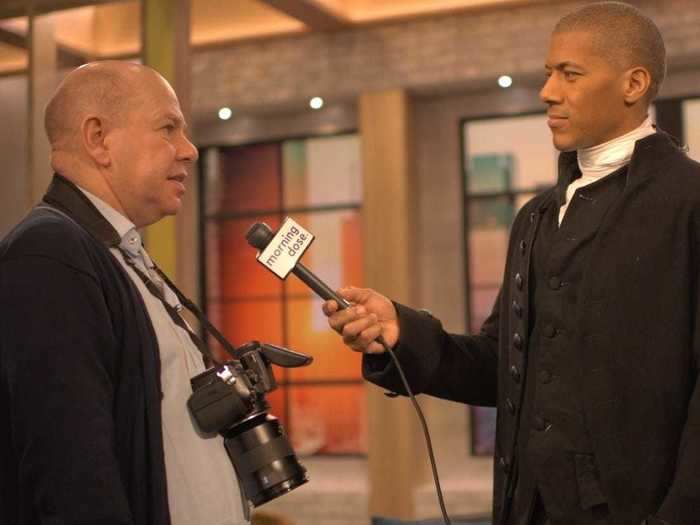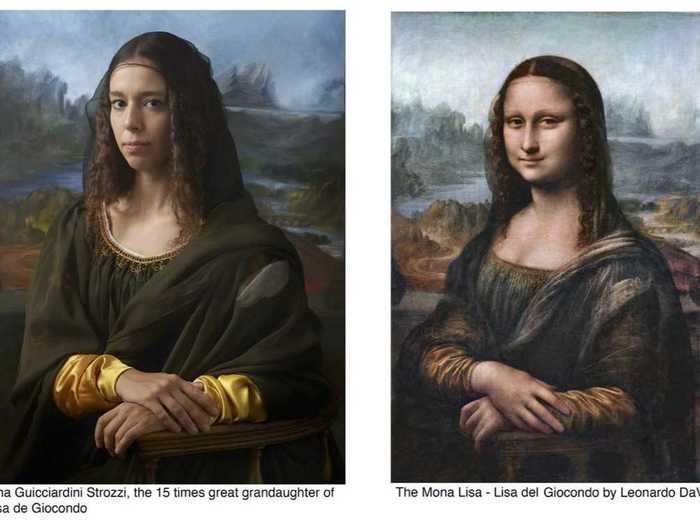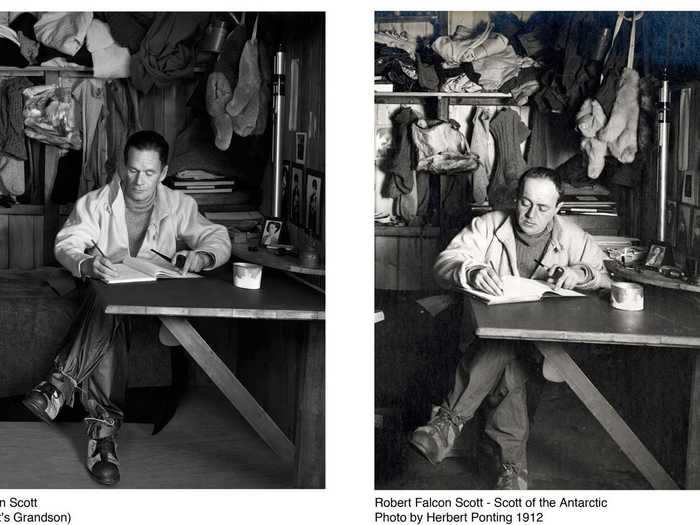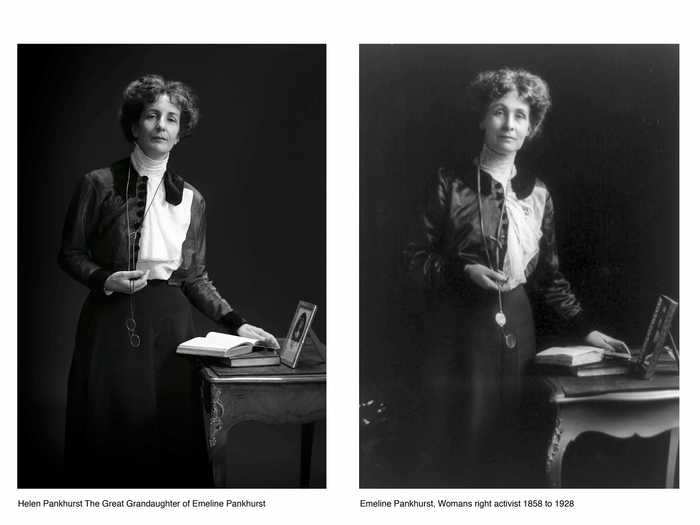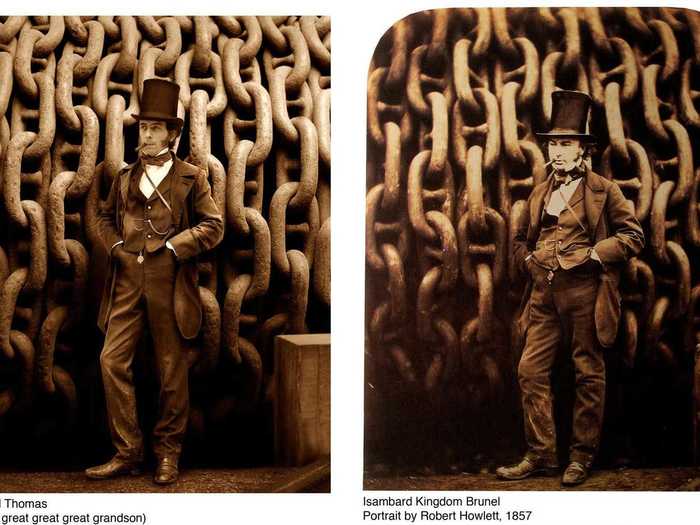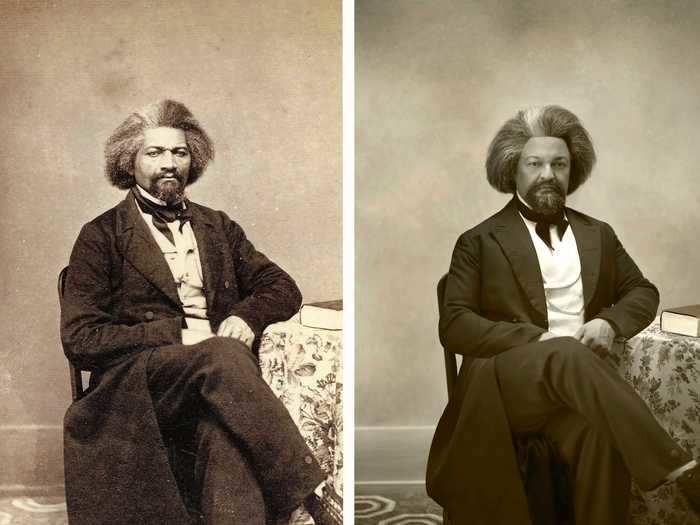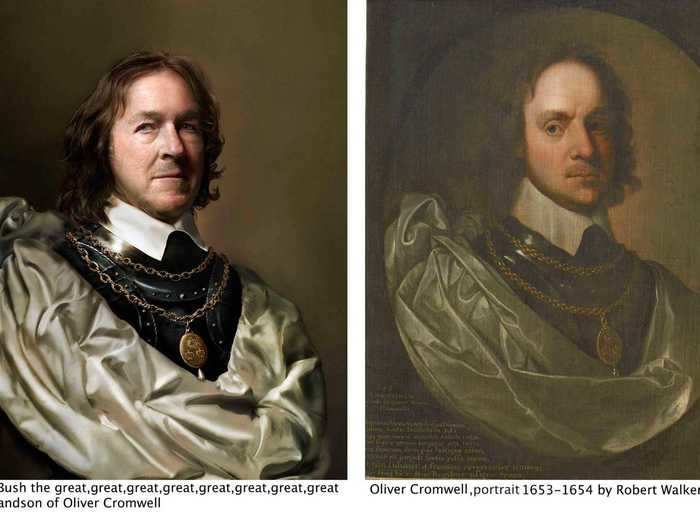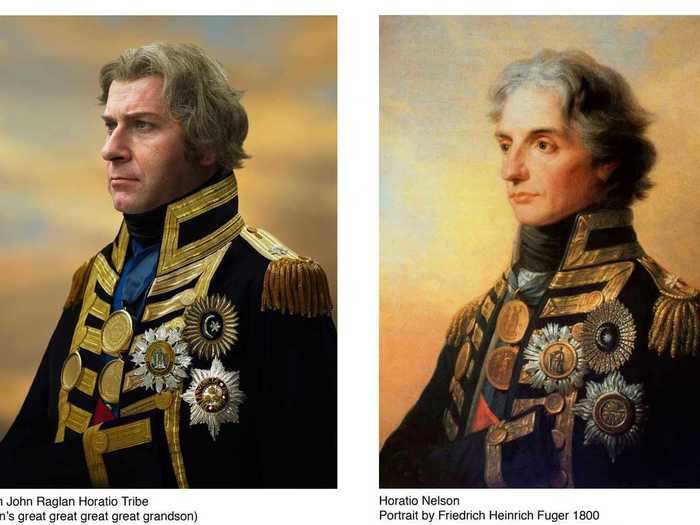Frederick Douglass (left) and third great-grandson Kenneth Morris (right).Drew Gardner for Smithsonian Magazine - UK-based photographer Drew Gardner finds the descendants of famous historical figures to photograph.
- He looks for descendants close in age and looks to their ancestor in the specific image he wants to replicate.
- He then asks them to dress and pose like their famous forebears.
- This results in stunning side-by-side images of ancestors and their descendants in which they often look eerily alike.
UK-based photographer Drew Gardner has spent 15 years tracking down the look-alike descendants of famous historical figures for his project, "The Descendants."
So far, Gardner has photographed 20 people, placing their images next to those of their prominent ancestors, such as Fredrick Douglass, Thomas Jefferson, and Elizabeth Cady Stanton, to show their resemblance.
As he worked on the series, Gardner said he "stopped to think of ways that I could gently challenge" the viewer, and remind them of the past, which "wasn't just a bunch of white dudes running around."
Gardner's work — in particular, the image of Thomas Jefferson alongside his Black descendant, Shannon LaNier — is especially poignant amid the Black Lives Matter movement and recent protests demanding racial justice.
"Little did I know that the timing of the release would coincide with the biggest civil rights movement since the 1960s," Gardner said of his series.
Keep scrolling to see more of his work.
Photographer Drew Gardner had the idea for his series, "The Descendants," when his mother told him he looked just like his grandfather, whom he'd never met.
Drew Gardner and Thomas Jefferson's descendant, Shannon LaNier.
Drew Gardner
He told Insider that it got him thinking: "Wouldn't it be interesting if descendants of very famous people from history were walking the streets? Wouldn't it be interesting if you could look into their faces and see hints of really famous people from the past? Are these people still walking amongst us?"
His photography series explores some of these questions.
He started with famous European figures like Napoleon, Charles Dickens, and the woman who posed for Leonardo da Vinci, better known as Mona Lisa.
Lisa del Giocondo, also known as the Mona Lisa (right) and 15th great-granddaughter Irina Guicciardini Strozzi (left).
Drew Gardner
The identity of the mysterious woman in da Vinci's famous painting remains unclear to this day, though it is widely believed to be a portrait of Italian noblewoman Lisa Gherardini, commissioned by her husband, Francesco del Giocondo, a Florentine cloth merchant.
Gardner tracked down Irina Guicciardini Strozzi, a descendant of Lisa del Giocondo (whose maiden name was Gherardini) and had her assume the same pose as her 15th great-grandmother for this powerful image.
But about five years ago he said he started getting "uncomfortable," noting that his work featured mostly white men. He has since worked to diversify his portfolio with women and people of color.
Elizabeth Cady Stanton (left) and third great-granddaughter Elizabeth Jenkins-Sahlin (right).
Drew Gardner for Smithsonian Magazine
"The world isn't white," he said. "So I held that thought in my mind and was contemplating for a long time how I could best represent the world around me and the world that I lived in, racially."
Not wanting to "go down the white male route and underplay the role of people of color and women, in American history, all history," Gardner said, he made efforts to find more diverse subjects.
He started working with the Smithsonian, expanding his series to the US and photographing the descendants of Thomas Jefferson, Frederick Douglass, and Elizabeth Cady Stanton, a suffragist famous for her role in the women's rights movement, pictured above next to her third great-granddaughter Elizabeth Jenkins-Sahlin.
Gardner says finding people for his series can be tricky.
Robert Falcon Scott (right) and grandson Falcon Scott (left).
Drew Gardner
His main criteria is that the historical figure is someone who interests him and is reasonably famous.
"I feel that there should be some degree of recognition or something extraordinary about that person," he said.
One such example is Robert Falcon Scott, the British naval officer famous for his Antarctica explorations, and doomed expedition to the South Pole, pictured above alongside his grandson Falcon Scott.
To find subjects for his series, the photographer says he does a web search, studies family trees, and when he thinks he's found a viable descendant, he confirms it with a genealogist.
Emmeline Pankhurst (right) and great-granddaughter Helen Pankhurst (left).
Drew Gardner
He usually has a portrait of the historical figure he wants to use picked out before contacting their descendant, so before he reaches out, he often checks to see they're around the same age as their ancestor in the image, and that they look similar enough to make for a good side-by-side picture.
"There's got to be something there that makes the magic," he said.
Pictured above, British political activist Emmeline Pankhurst, who helped UK women win the right to vote, and her great-granddaughter Helen Pankhurst, look like they could be sisters.
Not everyone agrees to participate in Gardner's project. "It's not 'a slam dunk,' he said. "This is an odd thing to ask people."
Isambard Kingdom Brunel and third great-grandson Isambard Thomas.
Drew Gardner
He asks people to dress and pose as their ancestors, and says that finding costumes — or often having them made — can be an obstacle, and prohibitively expensive in some cases.
Intricate backgrounds, such as the chains behind Isambard Kingdom Brunel in the picture above, whom Gardner describes as "one of the greatest engineers of the Victorian age" can also be difficult to re-create.
In terms of history, he says he sometimes wonders how people rationalize a lot of what their forebears did, but says that most of the people in his photo shoots have been pretty at ease with their ancestry.
Some feel the weight of their past. Gardner said news anchor Shannon LaNier, a descendant of Thomas Jefferson, didn't say yes to the shoot immediately.
Thomas Jefferson (left) and sixth great-grandson Shannon LaNier (right).
Drew Gardner for Smithsonian Magazine
LaNier was initially wary of celebrating his sixth great-grandfather.
Though the founding father and third US president was a proponent of individual rights and later denounced the slave trade, he paradoxically owned hundreds of slaves and had at least six children with one of them, Sally Hemings, who was 16 when she became pregnant with their first. Four of their children survived.
Because Hemings was enslaved by Jefferson and nearly 30 years his junior, some modern historians now argue that any sexual relationship between the two should be considered rape or assault.
"He was a brilliant man who preached equality, but he didn't practice it," LaNier told Smithsonian Magazine of Jefferson. "He owned people. And now I'm here because of it."
Once he agreed to the project, however, LaNier refused to wear the wig.
"I didn't want to become Jefferson," he told Smithsonian Magazine. "My ancestor had his dreams — and now it's up to all of us living in America today to make sure no one is excluded from the promise of life, liberty, and the pursuit of happiness."
Gardner says that the descendants most involved with their own history are the best subjects.
Frederick Douglass (left) and third great-grandson Kenneth Morris (right).
Drew Gardner for Smithsonian Magazine
"Somebody who's really engaged with their forebear will be more likely to go the extra mile with the project," the photographer said.
Kenneth Morris, pictured above, helped compile an illustrated biography of his third great-grandfather Frederick Douglass, who escaped slavery and became a leader in the abolitionist movement, and founded the Frederick Douglass Family Foundation, which is "focused on the struggle for racial equity and an end to human exploitation."
Gardner's main goal with his series is to get people thinking about their history — the good, the bad, and the ugly.
Oliver Cromwell (right) and his ninth great-grandson Charles Bush (left).
Drew Gardner
"Once you start to look at people's past you realize that it wasn't necessarily all rose-covered cottages and that our forebears and many famous people were involved in some very questionable things," he said.
Oliver Cromwell, pictured above with nine times great-grandson Charles Bush, is a hugely controversial figure in British history. While he ruled the country as Lord Protector of England, Scotland, and Ireland after having freed the people from King Charles I's oppression, others see him as a violent dictator who led one of the most brutal military conquests in English history.
"What I'm trying to encourage is a confrontation, or a little bit of curiosity from the viewer, because history isn't cut and dried," Gardner said.
Horatio Nelson (right) and fourth great-grandson William John Raglan Horatio Tribe (left).
Drew Gardner
Another controversial person featured in Gardner's series is Horatio Nelson, pictured above next to fourth great-grandson William John Raglan Horatio Tribe.
Nelson was one of the most celebrated British naval commanders known for defeating Napoleon, however, he has also been widely criticized and seen as a white supremacist who stood in the way of Britain's abolitionist movement, as Afua Hirsch wrote in a 2017 op-ed for The Guardian which argued that Nelson's column, a monument in London, should be taken down.
"I'm not excusing any of it," Gardner said, speaking of some of the more reprehensible actions of the people he's chosen to feature. "I'm just saying, you know, I think it's important that we have the conversation, and consider people as a whole and not a part."
"More knowledge of our past leads to more understanding between people," he added. "I encourage education into our past, which is something I think has never been more needed than it is right at this moment."

